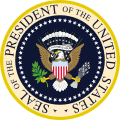This article needs to be updated.(March 2021) |

| ||
|---|---|---|
Personal Pre-vice presidency 36th Vice President of the United States
Post-vice presidency 37th President of the United States
Appointments Policies Tenure Post-presidency Presidential campaigns Vice presidential campaigns
 | ||
The following is a timeline of the presidency of Richard Nixon from January 1, 1971, to December 31, 1971.
